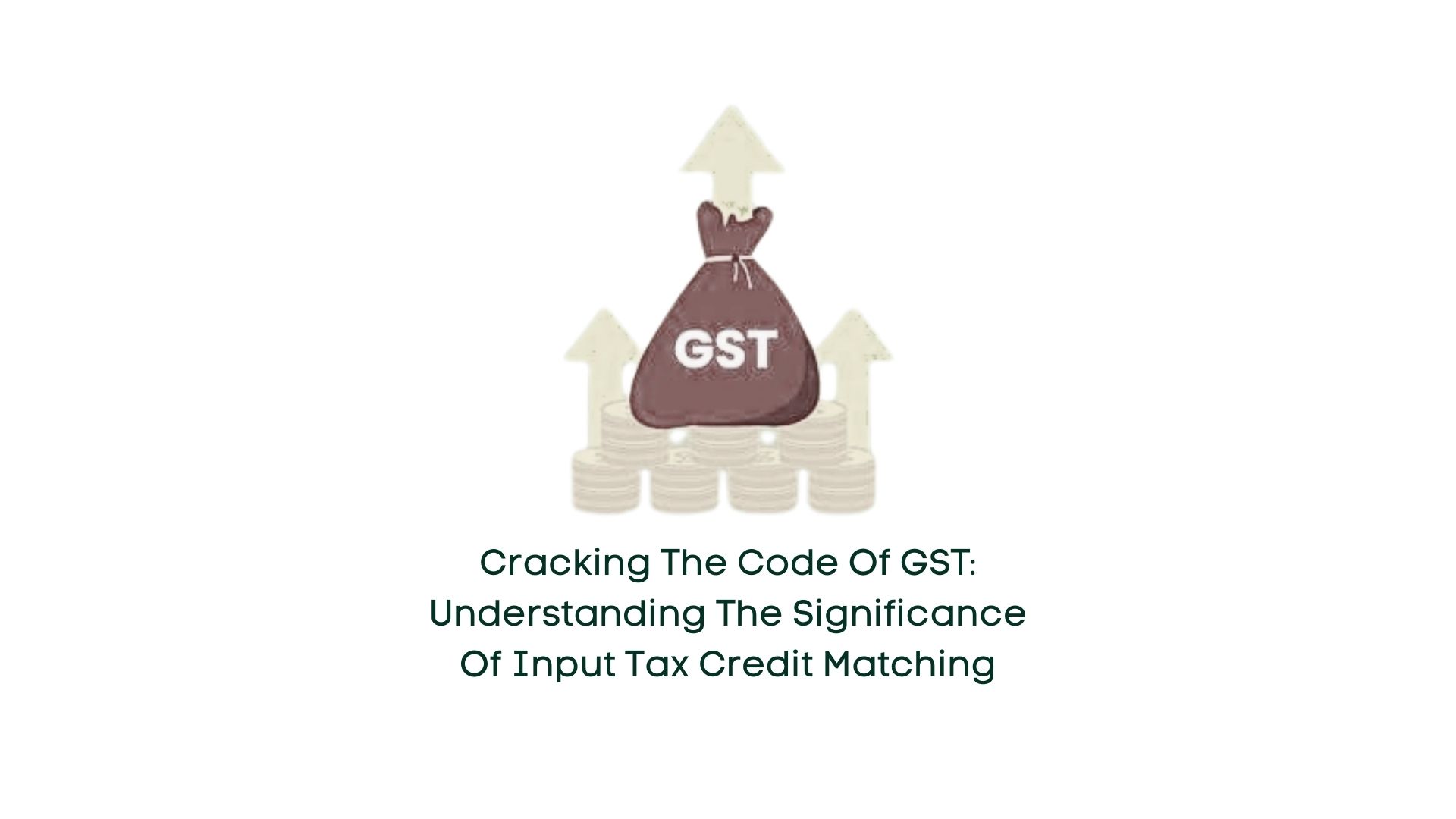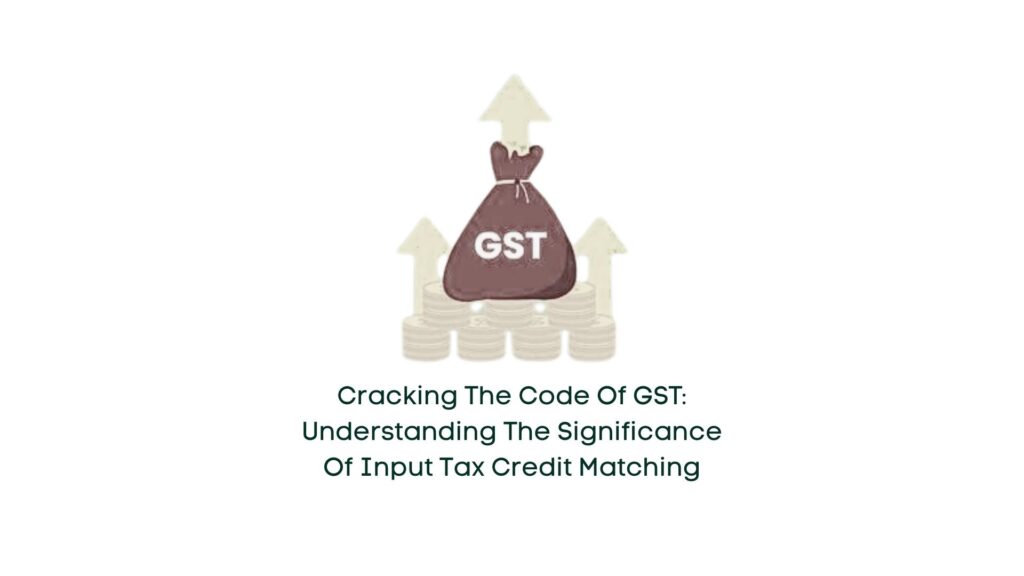
29 Feb Cracking the Code of GST: Understanding the Significance of Input Tax Credit Matching

Introduction
In the realm of Goods and Services Tax (GST), the Matching Concept stands as a pivotal element governing Input Tax Credit (ITC). This principle dictates that the ITC claimed by the recipient for inward supplies is only validated if it corresponds with the outward supplies declared by the supplier in their return.
Procedural Framework
The procedural framework for matching outwards liability and Input Tax Credit is outlined in Section 42 of the CGST Act. This involves the submission of various returns such as GSTR 1, GSTR 2, and GSTR 3. Specifically, Section 42 mandates that the details of each inward supply disclosed in GSTR 2 must align with the corresponding details of outward supply furnished in GSTR 1 by the respective supplier.
Statutory Provisions
Under statutory provisions, Section 42(1) of the CGST Act delineates the criteria for matching, reversal, and reclaim of Input Tax Credit. This includes cross-referencing the details of inward supplies with corresponding outward supplies, validating IGST paid on imported goods, and preventing duplication of ITC claims.
Suspension of Matching Concept
However, it’s important to note that the matching concept, as defined in Section 42 and 43, is suspended in the absence of GSTR 2 and GSTR 3 filings.
Introduction of Section 43A
A notable addition to the legislative framework is Section 43A, introduced via the CGST Amendment Act, 2018. This section holds precedence over several provisions including section 16(2), 37, 38, 39(1), 41, 42, and 43 of the CGST Act. It outlines procedures for verifying, modifying, or deleting supply details furnished by suppliers and the recipient’s process for availing and verifying ITC.
Supremacy of Section 43A
Section 43A employs a ‘notwithstanding’ clause, signifying its supremacy over other sections. It dictates the procedure for furnishing returns and availing ITC, encompassing the submission of outward supply details by suppliers on the common portal (GSTR 1) and specifies the tax liability associated with such supplies.
Liability and Recovery
Furthermore, Section 43A imposes joint and several liability on suppliers and recipients for tax payment or ITC availed in relation to outward supplies not reported in GSTR 1. Recovery procedures are outlined, including provisions for non-recovery in cases involving minimal amounts.
Default Payment Mitigation
In cases of tax payment defaults, Section 43A(8) allows for the furnishing of outward supply details within six months of registration to mitigate penalties.


No Comments